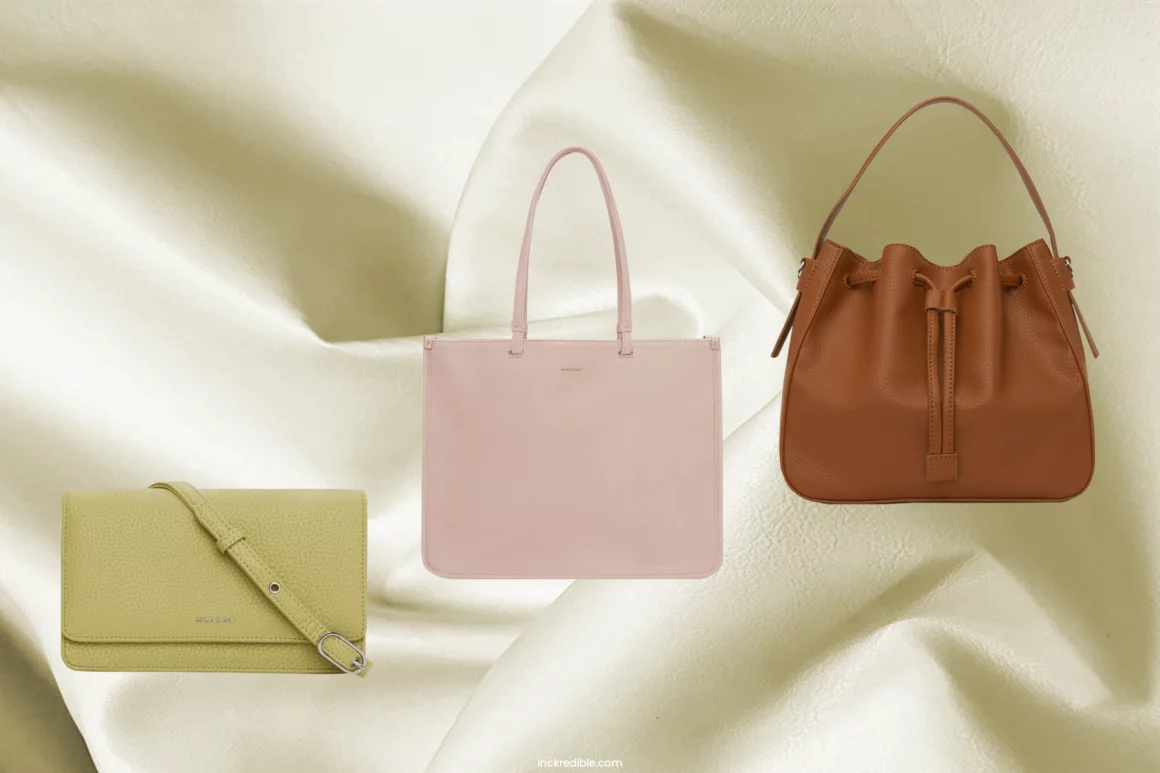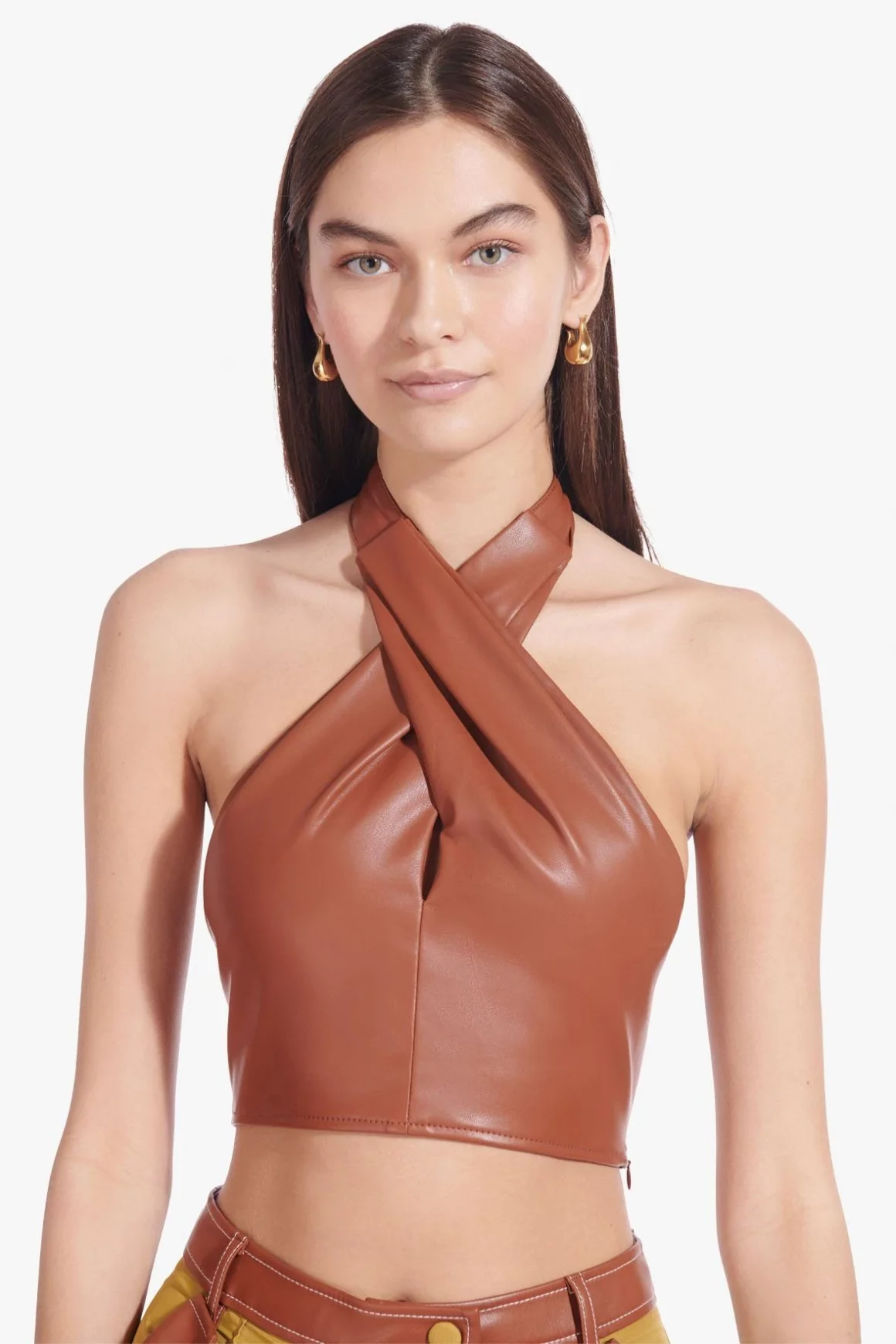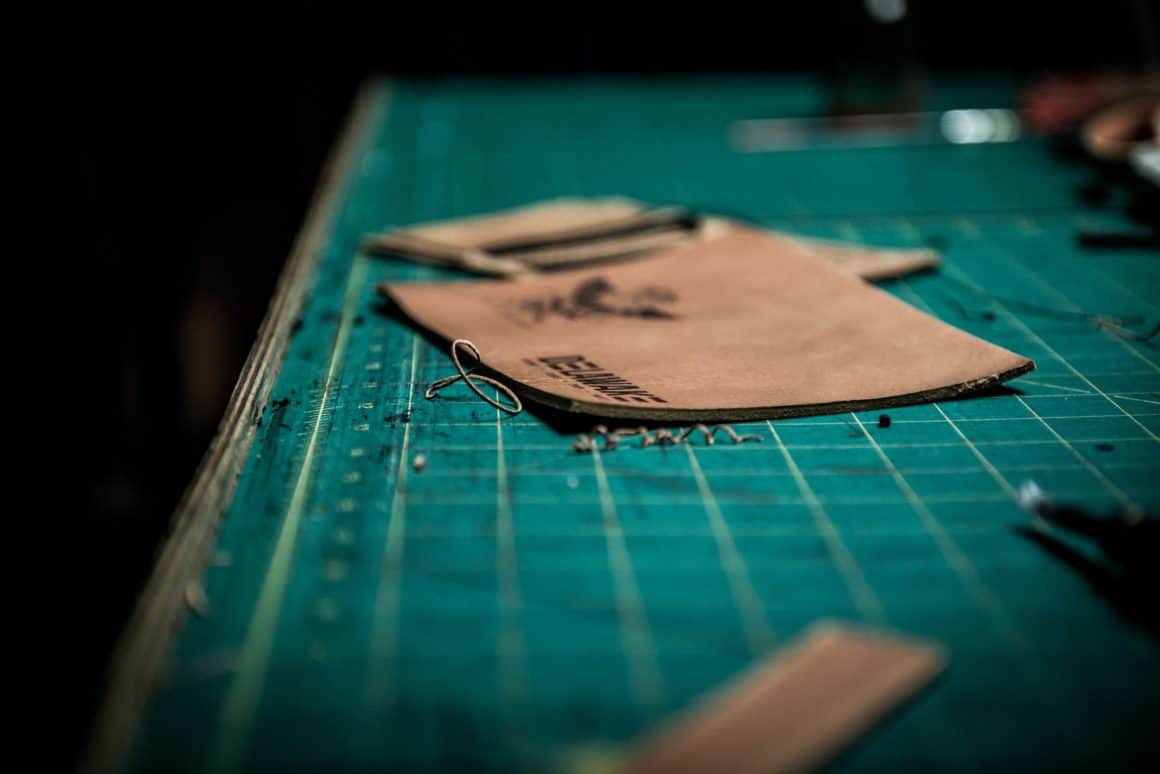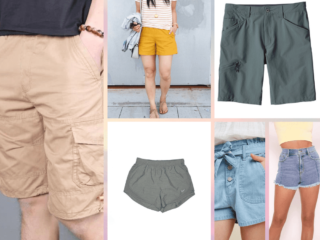
What Is Vegan Leather?
Vegan leather is a petroleum-based substitute for genuine leather. It is also called faux leather, synthetic leather, fake leather, artificial leather, pleather, Naugahyde, or ersatz leather.
Vegan leather has some characteristics in common with natural leather, but they are different in many other ways. For example, vegan leather can be created without animal parts, so there is no need to hurt animals during production.
Vegan leather is as soft as natural leather, and there is almost no noticeable visual difference between both types. However, vegan leather does not feel like leather to the touch. It has a plastic feel that instantly sets it apart from natural leather.
Also, vegan leather is less porous than genuine leather because it does not have natural pores like natural leather.
Vegan leather is water-resistant, just like natural leather, hence it is easy to clean. However, it is significantly less durable than natural leather. Unlike genuine leather, faux leather can be made in any color of choice. From red to green and gold, it is possible to find synthetic leather in any color.
Faux leather is a popular choice of clothing, especially since it imitates natural leather so well. It can make jackets, hats, shoes, gloves, coats, pants, belts, bags and other outerwear. It can also be used for couches and other upholstery, firearm handles, luggage, sports items, etc.
Animal rights activists highly praise vegan leather because it is made without hurting animals. However, environmentalists do not share the sentiment because faux leather does not biodegrade, and its production releases harmful chemicals into the atmosphere.
In light of this, many manufacturers have started making vegetable-based faux leather that does not require animal cruelty and biodegrade with time.
Why Do People Use Vegan Leather?
1. It Is Cost-Effective
The cost was the second main reason why faux leather was manufactured. Leather manufacture is a long, expensive, and tedious process that begins with the growing and eventual slaughter of animals and ends with the tanning and dyeing of skins and the artistry of leatherworking.
Because it costs a lot more to create, it costs a lot more to buy. In the 12th century, customers, designers and everyone in between we’re looking for a less expensive alternative. Even now, people are desperate to rock leather styles and outfits without paying a fortune.
2. It Is Environmentally Friendly
More and more people are beginning to not just hear, but see negative impacts of issues like climate change, exploitation, and pollution, which have overtaken the planet. Consequently, more customers have begun to demand for healthier and more eco-friendly alternative to leather, at any cost.
Agriculture, particularly the rearing of animals and livestock remains the healthiest, yet damning industry on earth, with evidence of having one of the highest carbon footprints. Things like soil degradation, acidification, deforestation are all by products of heavy industrial farming.
Thus, one more reason some consumers have decided to boycott products with real leather in order to promote the positive impact of more eco-friendly and sustainable options.
3. Vegan Lifestyle
The emergence of vegetarianism and veganism and the desire to live a cruelty-free or animal-free lifestyle is another contemporary motivator. People who follow this way of living avoid consuming any animal-derived items in any way, from eating steak to not using natural cosmetics that contain cochineal, an insect-based pigment.
The thought of using animal leather is a no-no for animal activists, vegans, and vegetarians, resulting in a need for a cruelty-free leather substitute.

History Of Vegan Leather
Presstoff was one of the first imitation leather types still being manufactured today. Since genuine leather in German was strictly rationed during wartime, this fabric was developed as an alternative. It became popular in Germany and was widely used in the war effort.
However, Presstoff production never really gained traction outside of Germany, and people quickly moved on to other more appealing leather options.
With the advent of Naugahyde in 1920, synthetic leather entered the international fabric scene. The U.S. Rubber Company, founded in 1892, created this material. After many years of research, the engineers at U.S. Rubber created an excellent viable alternative to leather called “Naugahyde,” initially used in handbags.
Naugahyde grew popular in the 1930s for a variety of industrial applications. Even the U.S. Armed Forces used it in several areas of the war effort in the 1940s. Some historians claim that the development of faux leather started in China in the 15th century.
Still, these Chinese attempts to make synthetic leather were never made on a large scale. It wasn’t until the advent of petroleum-based plastics at the end of the nineteenth century that a viable substitute to leather could be mass-produced.
From the 1950s onwards, several other companies began producing artificial leather products, following in the footsteps of U.S. Rubber. Although Naugahyde remained the most well-known name for synthetic leather until the last decades of the twentieth century, competitors gradually began to challenge the brand’s dominance in the artificial leather market.
The environmental movement in the 1970s raised public awareness of the risks of synthetic textiles, and popular opinion of imitation leather production shifted negatively.
Over the last few decades, several companies have begun developing faux leather alternatives that aren’t created from non-biodegradable and environmentally hazardous petroleum-based plastics.
For the most part, these attempts have been unsuccessful, but some companies have succeeded at producing non-PVC types of fake leather and are successfully selling them. However, the size of this market is still only a fraction of the size of the international faux leather market.
How Is Vegan Leather Made?
There are many methods by which faux leather is produced. To make faux leather, manufacturers might use a range of different manufacturing procedures.
For instance, Presstoff is a type of faux leather that is made by mixing paper pulp with a particular type of resin that gives this plant-based material a lot more resisting power than normal. It’s yet to go global though, and this is as a result of its tendency to melt under heat or other moist conditions, which makes it unable to withstand extreme flexing.
The majority of fake leather on the market today is made up of a base cloth covered with plastic material. Polyurethane (P.U.) and polyvinyl chloride (PVC) are the two most popular plastics used in synthetic leather production.
While the manufacturing procedures for these two plastics differ in some aspects, the binding processes to their underlying fabrics are very similar.
Materials Used To Produce Vegan Leather
Besides PU and PVC, some other materials are used to produce vegan leather. Note that these materials are not environmentally friendly.
1. Vegan
This is a microfiber material specifically designed to produce an animal-friendly replacement for leather.
2. Lorica
This material is made from several different microfibers. It is also used in the production of faux leather.
3. Birko-Flor
This is a synthetic material that is made from PVC and fleece. It is used by a famous leather manufacturer called Birkenstock.
4. Kydex
This is the result of combining PVC with acrylic. It is used by a plastic manufacturing company called Kleerdex.
How To Make Vegan Leather
1. Select Your Base Material
The majority of fake leather makers base their textiles on cotton or polyester. The polyester or cotton materials used as the foundation for artificial leather are usually rough and porous, and they are specially manufactured for this purpose.
Manufacturers of faux leather may make their base materials in some situations, but it’s much more common for them to get their base materials from third-party manufacturers.
2. Produce The Plastic
Following that, the manufacturers must create the plastic components to bind to their base materials. For example, PVC is created by mixing selected elements of salt and petroleum.
Chlorine is made by electrolyzing salt and then combining it with ethylene obtained from oil. The result of that combination is called ethylene dichloride.
The ethylene dichloride is then turned into a vinyl chloride monomer at a very high temperature. Following that, polyvinyl chloride resin turns the monomers into polymers.
Because the PVC used in fake leather production needs to be flexible, plasticizers are added to the petroleum product to make it flexible enough to adhere to the base cloth.
Isocyanates, polyols, and different additives are employed in P.U., which is a little more complex process. The numerous polymers used in the manufacturing of P.U. are reacted before being processed. To achieve a flexible end material, P.U. utilized in the manufacture of fake leather is exposed to plasticizing agents.
3. Bind The Materials
Next, the P.U. or PVC is bonded to the base material. There are many different ways this is done, but it is simple: the plastic is melted and spread over the base material.
4. Prepare The Fabric
When the plastic has bonded to the base material, the resulting faux leather can now be cut into strips for sale.
P.S.: The methods used to produce vegetable-based leather are pretty different from the steps outlined above.
Types Of Vegan Leather
1. PU Leather
This sort of synthetic leather is the least expensive type of synthetic leather available on the market today. This means it is less durable and comfy than other forms of artificial leather, which is a disadvantage.
2. PVC Leather
PVC leather outperforms P.U. leather only by a hair when it comes to durability. PVC leather is also available in higher quantities. PVC leather is also referred to as “poromeric” leather in some circles.
3. Leatherette
When we say “leatherette,” we’re referring to any synthetic leather that has a fabric foundation and is covered with a plastic layer. As a result, P.U. leather and PVC leather are considered leatherette materials.
4. Vegetable Oil Leather
Vegetable oil leather, also known as plant-based leather, has recently gained popularity among manufacturers experimenting with the material. Vegetable oil leather is far more durable than P.U. leather and PVC leather. It is also far more environmentally friendly.
However, because this fabric is substantially more expensive than other vegan leather forms, it is now categorized as a niche product for vegans who do not wish to contaminate the environment with their purchases.
What Is Vegan Leather Used For?
Environmental Impact of Faux Leather
The manufacture of faux leather negatively influences the environment in almost every way. While manufacturing faux leather helps protect animals from damage, the slow accumulation of this non-biodegradable substance in the world’s ecosystems has the unintended consequence of harming animal life.
Petroleum is a limited resource that can only be obtained by drilling, detrimental to the surrounding plant and animal life. The production of fossil fuel derivatives like ethylene used in faux leather production inherently introduces toxic substances into the surrounding ecosystem.
While certain faux leather manufacturing plants may make significant efforts to recycle solvents and lessen their overall environmental impact, these efforts will only have a limited effect on the overall negative consequences of synthetic leather production worldwide.
The fact that synthetic leather is not biodegradable means that it will remain in the environment and increase environmental pollution once it is discarded. Even though scientists aren’t sure how long it takes for synthetic substances like polyurethane (P.U.) and polyvinyl chloride (PVC) to biodegrade, the most reliable estimates point to a time range of between 200 to 500 years after production.
The polluting power of synthetic leather is far greater than that of genuine leather since genuine leather biodegrades within a decade or two of use.
Also worth noting is that the bulk of faux leather is produced in China. The communist leadership of this country is notorious for its lenience when it comes to human rights norms. When employees are exploited instead of empowered, their ability to exercise proper environmental stewardship is significantly reduced.
While the creation of imitation leather in third-world countries is less expensive, it has a more significant environmental impact.
Given that it is biodegradable, vegetable-based imitation leather can have a lower environmental impact. Although vegetable-based synthetic leather has a limited market share, the ecological benefits of this fabric are all but non-existent due to the small size of the industry.
Environmentally Friendly Raw Materials/Alternatives To Faux Leather
1. Paper
Paper can be used in manufacturing vegan leather. However, the type of paper that is used is not writing paper. It is more like cardboard used to make boxes for packaging goods. An example of a paper used for this purpose is washi. It is made from the bark of a Japanese tree.
2. Cork
Interestingly enough, cork is now considered one of the most environmentally friendly materials available. Using it helps reduce desertification and deforestation because it is easily recycled and entirely natural. Due to the waterproofing properties of cork and its organic texture, many large fashion companies have been incorporating cork into their collections for quite some time.
However, some people do not care for the appearance of cork, which is perhaps its most significant disadvantage.
3. Organic Waxed Cotton
Organic waxed cotton is another example of an environmentally safe raw material. Big fashion companies have been using waxed cotton to substitute for leather for many years. It is waterproof, flexible, and easy to wash.
4. Muskin
Mushroom leather is another alternative to leather. You can grow the mushrooms to any size you want, but you’ll have to waterproof the material before you can use it. It’s easy to cultivate, organic, and environmentally safe.
5. Pinatex
This material is made from a pineapple bush. It feels like cowhide leather to the touch. It is durable and waterproof and makes shoes, bags, coats, etc.
6. Coolstone Leather
This type of faux leather is relatively new. It is made from sewable slate stone. It has a grey matte finish, and it feels like a cross between slate and paper. Coolstone leather ages just like leather, except it, gets scratches instead of pores.
It is a very durable material used to make bags, hats, coats, gloves, and other outdoor clothing.
Conclusion
Vegan leather is an umbrella term for so many different types of materials which are each processed differently to produce consumer products.
Faux leather can be made from many different materials, so you will find something on the market that suits you no matter your personal preferences. You may choose to produce your vegan leather. With a bit of research, you may be able to make your faux leather.
Hopefully, this article has taught you all you need to know about vegan leather, its history, types, sources, and how it is manufactured.





